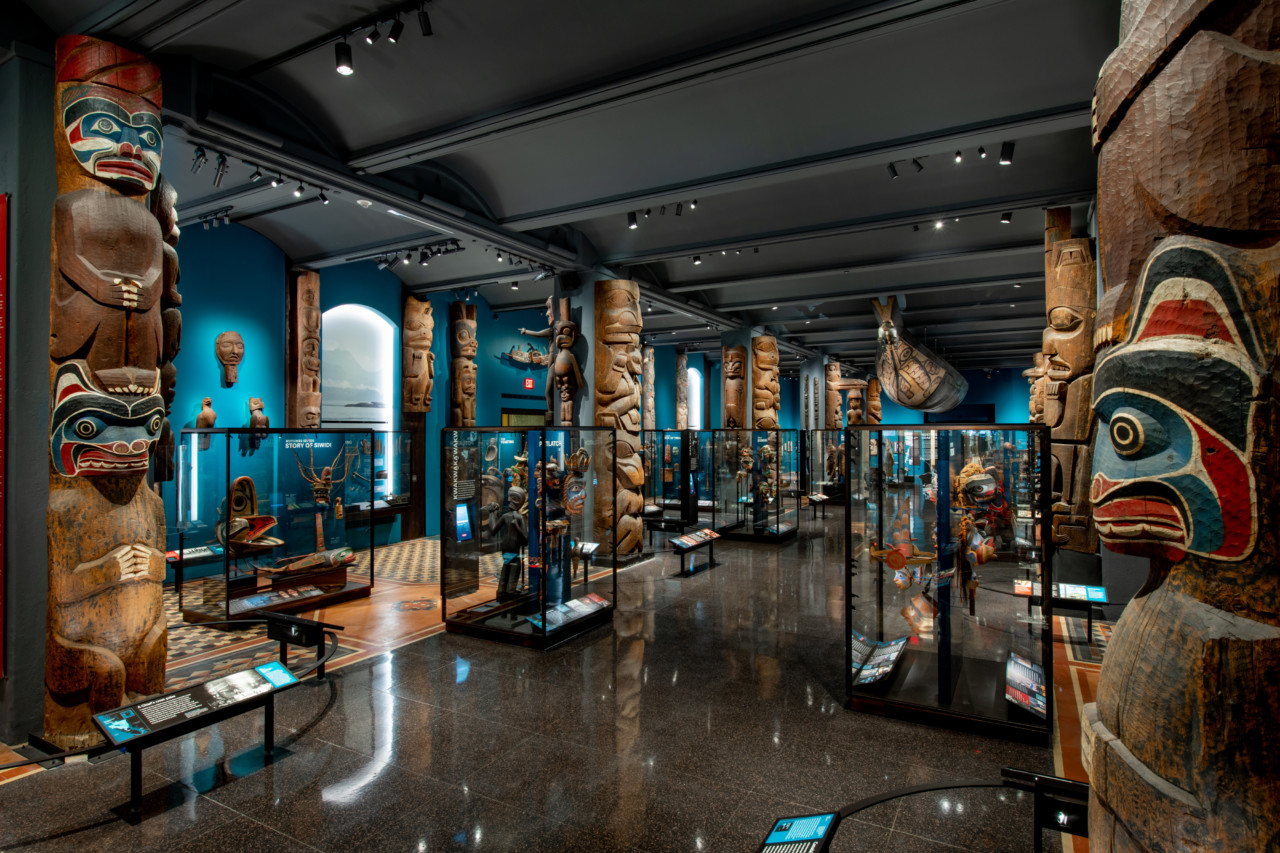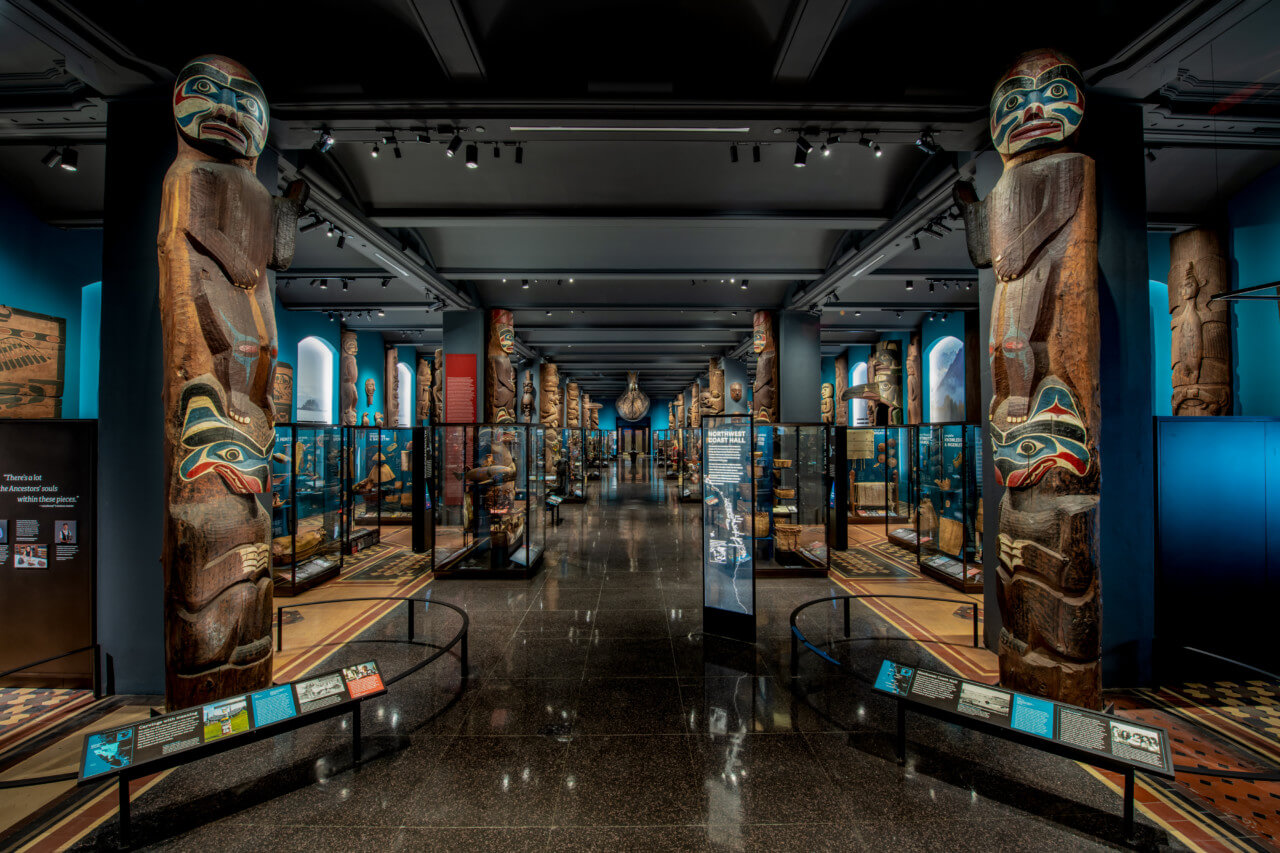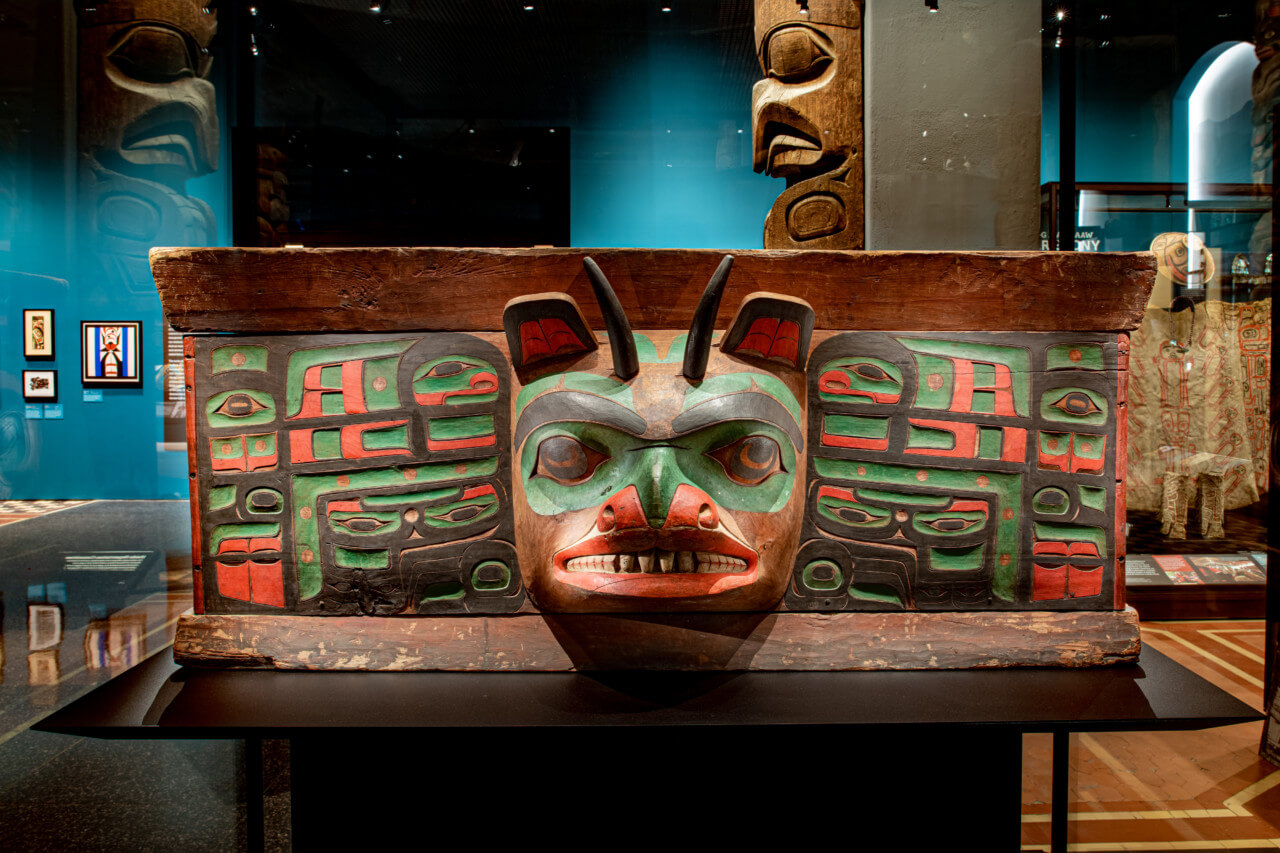The oldest gallery at New York’s American Museum of Natural History (AMNH), the Northwest Coast Hall, reopened to the public today, May 13, after being closed for the better part of five years while being “fully reimagined, painstakingly conserved, and gloriously reinvigorated,” as AMNH President Ellen V. Futter put it in a press statement.
The exhaustive revitalization of the over 123-year-old gallery is among a modest handful of major AMNH overhauls coinciding with the 150th anniversary of the storied Manhattan institution, including a transformative refresh of the Allison and Roberto Mignone Halls of Gems and Minerals completed last year (so long, iconic 70s-era carpeting) and the new, Studio Gang–designed Richard Gilder Center for Science, Education, and Innovation, which is set to make its public debut this coming winter. (Keep an eye out for AN’s forthcoming behind-the-scenes-look at the Gilder Center’s construction.)
As noted by the museum, although the organization of the historic gallery—German-American anthropologist Franz Boas first installed the space in 1899 as the museum’s first permanent exhibit dedicated to the interpretation of cultures—has largely been retained, it has also been recontextualized to present a more complex and comprehensive backdrop for the objects on display. The concept design for the revamped, 10,200-square-foot gallery was developed by Kulapat Yantrasast of WHY Architects in collaboration with the museum’s Exhibition Department; per the museum, the design showcases the “vitality and persistence of Pacific Northwest Coast Nations by enlivening the presentation of cultural treasures with new interpretation, storytelling, and dynamic media developed with Native scholars, artists, historians, filmmakers, and language experts.”
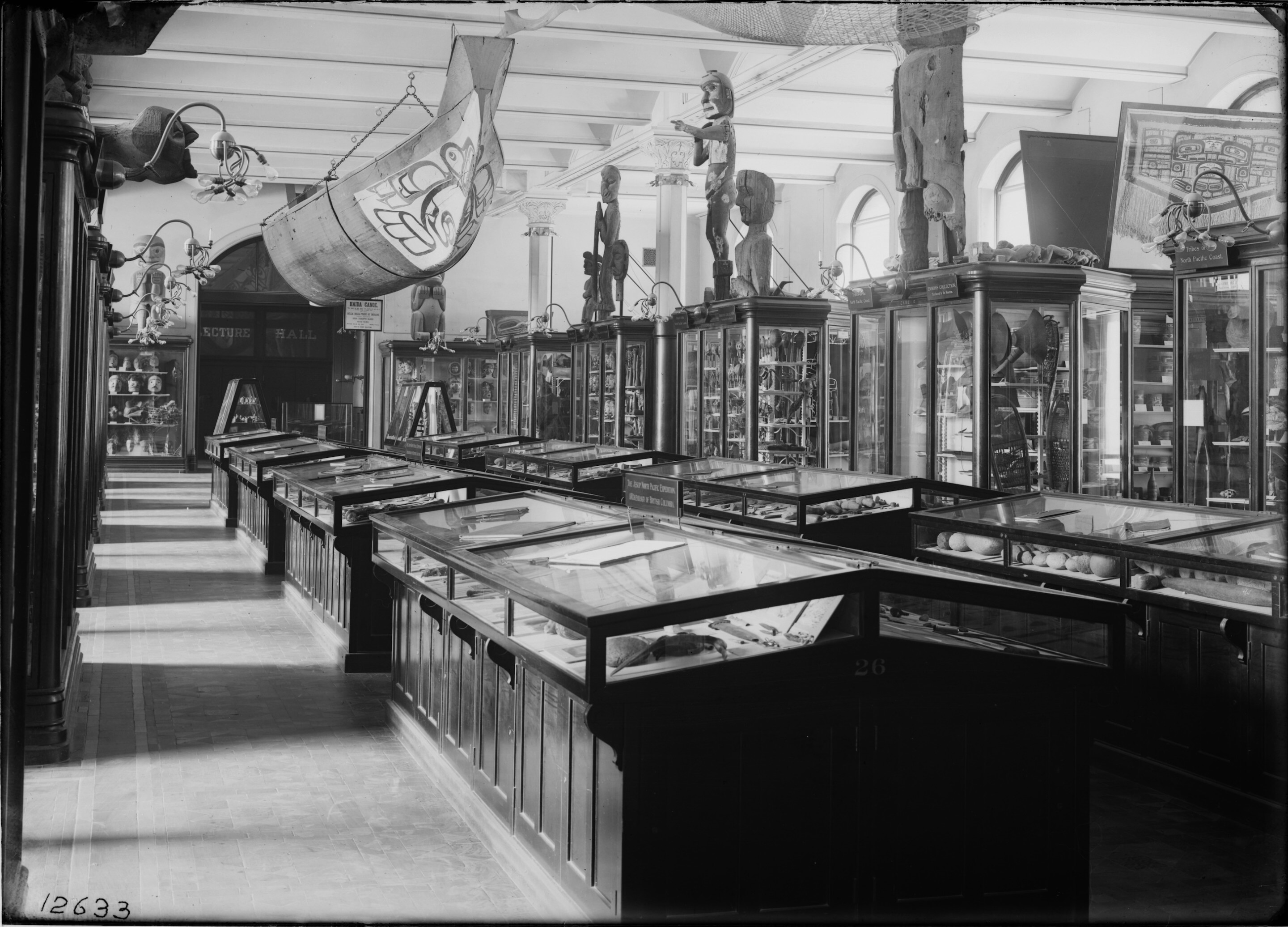
“It started with us listening. The strong voices of the Northwest Coast cultures are vibrantly amplified through the new installation of objects, presented in the round and with contextual relationships to one another,” said Bangkok-born Yantrasast, founder and creative director of WHY, in a statement. “As an architect, the opportunity to really spend time absorbing and conversing with the multiple cultures represented in our project has greatly informed how we were able to bring out a fresh design, one that provides clarity and sense of place while respecting and responding to the deep context and diverse stories that the meaningful art objects present.”
The refreshed Northwest Coast Hall is organized into a series of spacious alcoves, each populated by display cases collectively containing more than 1,000 “cultural treasures”—masks, weavings, ceremonial regalia, and more—from the Coast Salish, Haida, Haíłzaqv, Kwakwaka’wakw, Nuu-chah-nulth, Nuxalk, and Tlingit communities. In addition to exhibition areas dedicated to the aforementioned communities, an additional alcove is devoted to the Gitxsan, Nisga’a, and Tsimshian Nations. Informational labels in each alcove provide details about the objects on display in both English and Native languages while dynamic media installations “[introduce] visitors to the traditions, languages, music, and histories of these living cultures and makes connections to themes and topics in adjacent sections, demonstrating the interconnectedness of Northwest Coast communities.” At the end of the space, are two sections dedicated to contemporary Northwest Coast artists, including a rotating gallery and Generation to Generation, a new exhibition that “[demonstrates] how traditional artforms are creatively re-interpreted by today’s generations.” On view now in the rotating gallery section is the Living with the Sea exhibition.
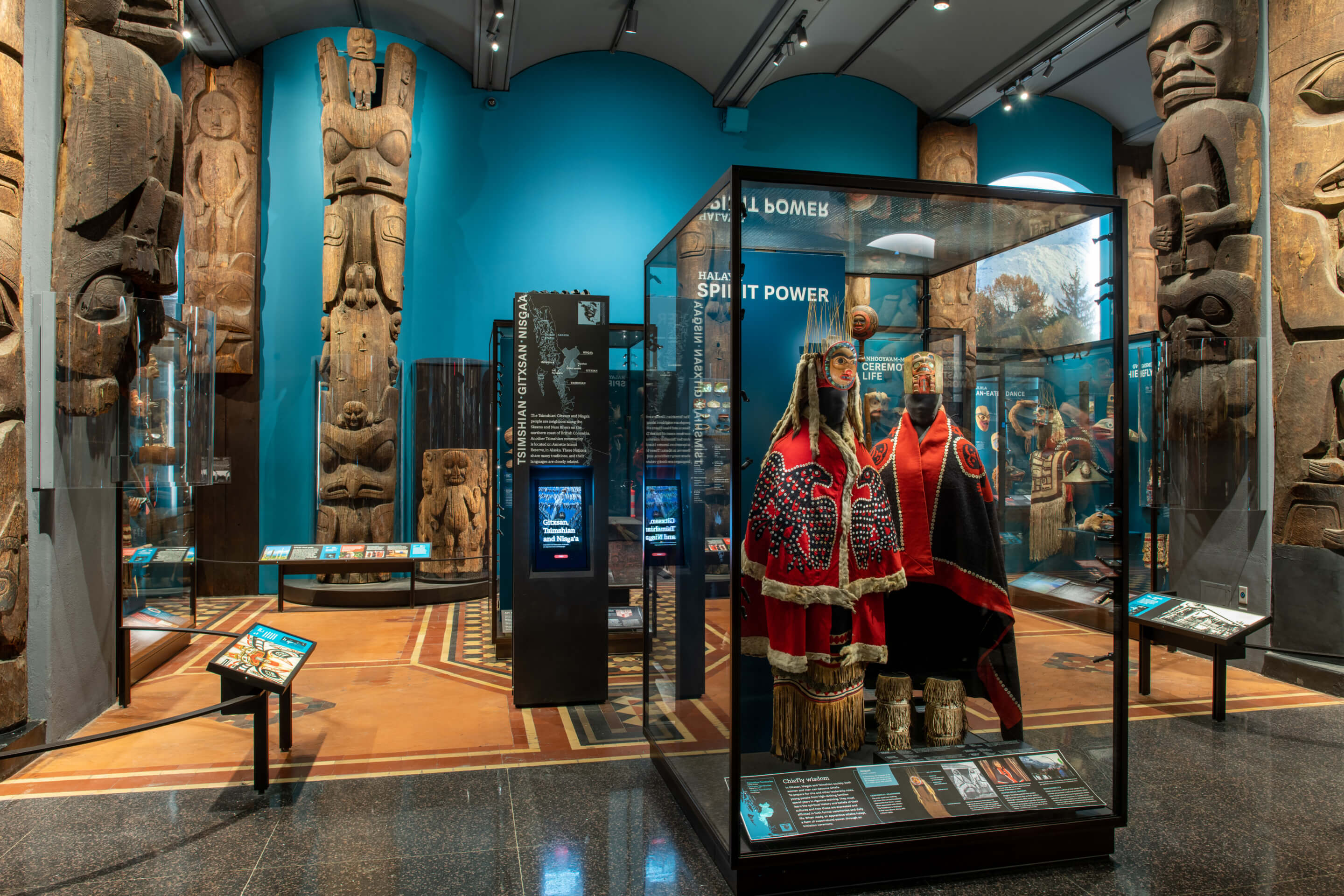
The new Northwest Coast Hall is curated by Peter Whiteley, curator of North American Ethnology at the Museum, working alongside co-curator Ḥaa’yuups, Nuu-chah-nulth scholar and cultural historian, and in collaboration with a group of consulting curators from the Coast Salish, Gitxsan, Haida, Haíłzaqv, Kwakwaka’wakw, Nuu-chah-nulth, Nuxalk, Tlingit, and Tsimshian communities. Per the museum, the consulting curatorial team helped to “guide object selection, exhibit design, and exhibit interpretation.”
As for the objects on display within the Northwest Coast Hall, they, as mentioned, number over 1,000-strong and include more than 60 monumental carvings, ranging in height from 3 to 17 feet tall; myriad examples of Pacific Northwest Coast material culture including a Kwakwaka’wakw transformation mask and a Nuu-chah-nulth ceremonial Wolf curtain spanning more than 37 feet long; and, last but not least, the 63-foot-long Great Canoe, which was carved from a single Western red cedar tree in the 19th century and ranks as the largest Northwest Coast dugout canoe in existence. Relocated in 2020, it is now on display as the Hall’s ceiling-suspended centerpiece for the first time in more than 70 years.
A trove of new pieces were also created specifically for the revitalized hall, including, as highlighted by the AMNH, a Suquamish woven basket, a recreation of a beaver-shaped Tlingit canoe prow, and a six-foot red cedar pole “showing the different stages of carving a monumental pole.”
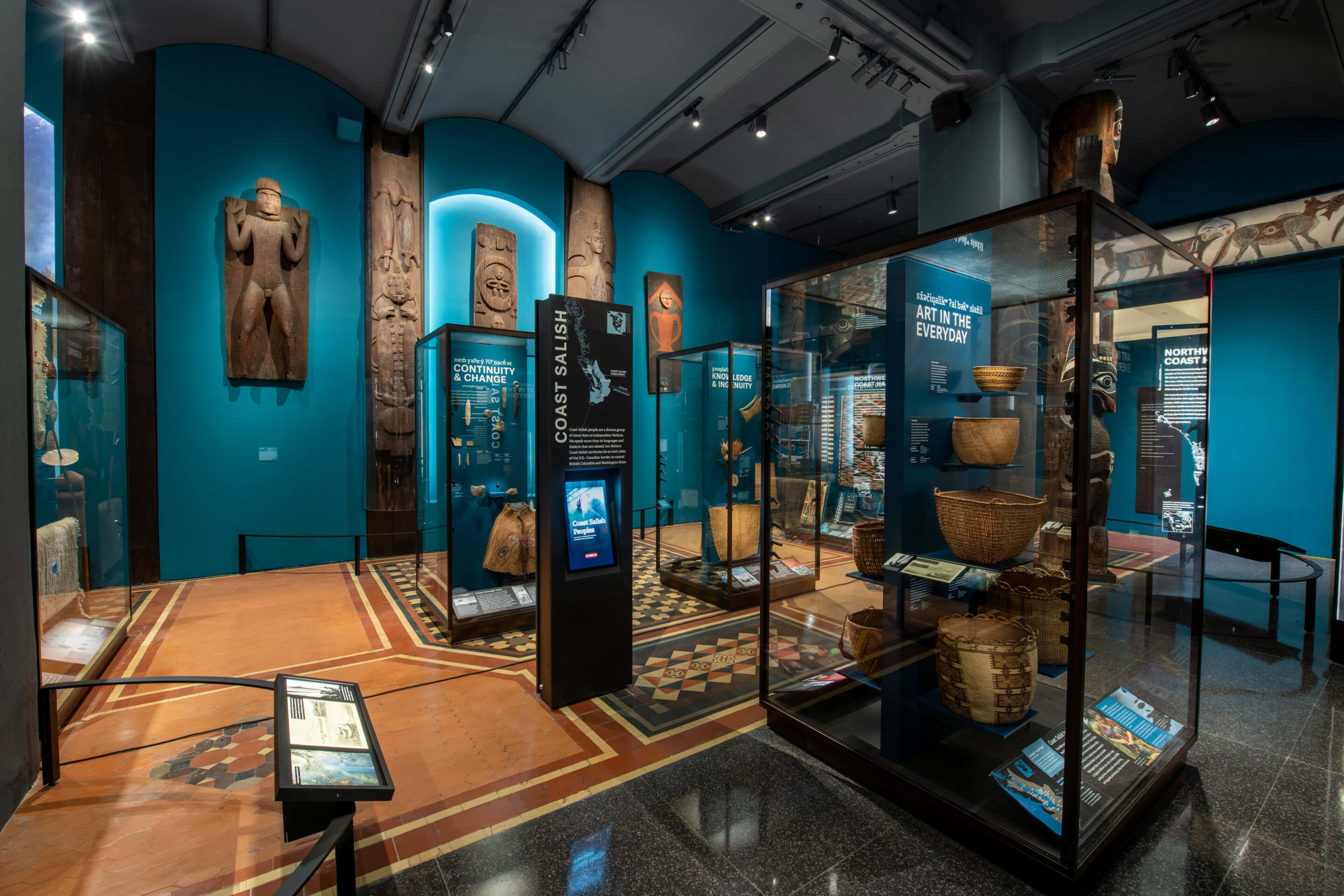
“I want my great-grandchildren to come here. I want them to be proud of where they’re from, proud of who they are, proud of the history of their family and the achievements of our people, the intelligence of people, the knowledge of people, the science of people in my community,” said co-curator Ḥaa’yuups. “So I want the Hall to reflect that reality, that there’s a different way to think about the world around you.”






